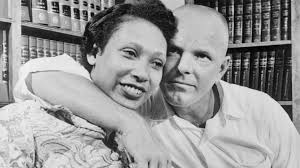The Legalization of Interracial Marriage
The legalization of interracial marriage marked a pivotal moment in civil rights history, affirming the principle that love and commitment should not be constrained by racial boundaries.
Marriage has long been seen as a deeply personal choice, but for much of history, laws dictated who people could or could not marry based on race. The legalization of interracial marriage is not only a legal milestone but also a profound turning point in the fight for equality, love, and freedom of choice.
A History of Restriction
Before 1967, many U.S. states enforced anti-miscegenation laws—laws that banned interracial marriage and relationships. These laws were rooted in racial segregation, white supremacy, and systemic discrimination. At their peak, over 40 states had some form of prohibition against interracial unions.
The legal barriers were reinforced by widespread social stigma. Interracial couples often faced ostracism, threats, and even violence. Despite these challenges, many couples defied the law, pushing back against the injustice of racial boundaries.
Loving v. Virginia: The Landmark Case
The turning point came in 1967, with the case of Loving v. Virginia. Richard Loving, a white man, and Mildred Loving, a Black and Native American woman, had married in Washington, D.C., where interracial marriage was legal. Upon returning to their home state of Virginia, they were arrested and sentenced for violating the state’s anti-miscegenation laws.
The couple appealed, and their case reached the U.S. Supreme Court, which unanimously ruled that such laws were unconstitutional. The Court declared marriage a fundamental right and struck down all race-based restrictions on marriage across the country.
Chief Justice Earl Warren wrote in the decision:
“Under our Constitution, the freedom to marry, or not marry, a person of another race resides with the individual, and cannot be infringed by the State.”
This ruling not only legalized interracial marriage but also became a cornerstone in broader civil rights protections.
Impact and Progress
The legalization of interracial marriage paved the way for greater acceptance and diversity in American families. Over time, what was once taboo became more normalized:
- In 1967, only about 3% of marriages in the U.S. were interracial.
- Today, that number has grown significantly, with nearly 1 in 6 marriages being interracial.
This shift reflects not just changing laws, but evolving societal attitudes about race, identity, and love.
Beyond the United States
While Loving v. Virginia was pivotal in the U.S., other countries have had their own struggles and triumphs. For example:
- South Africa’s Prohibition of Mixed Marriages Act (1949) was a cornerstone of apartheid, and was not repealed until 1985.
- In many parts of the world, racial, ethnic, or caste-based restrictions still linger—showing that the fight for marital freedom continues.
Why It Matters Today
The legalization of interracial marriage reminds us that laws can either enforce discrimination or uphold freedom. It also illustrates how personal choices, like who we love, are deeply tied to broader struggles for civil rights.
Today, interracial couples continue to face unique challenges, from cultural differences to societal biases. Yet their existence stands as a living testament to resilience, unity, and the power of love over prejudice.
The journey to legalizing interracial marriage is a powerful reminder that justice is not given—it is fought for. The Loving decision in 1967 was more than a legal ruling; it was a declaration that love transcends color lines, and that equality must extend into the most intimate corners of our lives.
As we reflect on this milestone, we are reminded of a timeless truth: when love is free, society becomes stronger, more inclusive, and more humane.
Frequently Asked Questions (FAQs): The Legalization of Interracial Marriage
1. What is interracial marriage?
Interracial marriage refers to a legally recognized union between two people of different racial or ethnic backgrounds.
2. When was interracial marriage legalized in the United States?
Interracial marriage was legalized nationwide in the U.S. on June 12, 1967, after the Supreme Court’s ruling in Loving v. Virginia.
3. Why was interracial marriage banned before 1967?
Before 1967, many states had anti-miscegenation laws, which were rooted in racism, segregation, and the desire to maintain racial “purity.” These laws criminalized interracial relationships.
4. Who were Richard and Mildred Loving?
Richard Loving, a white man, and Mildred Loving, a Black and Native American woman, were the plaintiffs in the historic case Loving v. Virginia. Their fight for the right to marry led to the legalization of interracial marriage in the U.S.
5. Is interracial marriage common today?
Yes. Interracial marriage has grown significantly over the decades. In 1967, about 3% of marriages were interracial. Today, nearly 1 in 6 marriages in the U.S. is interracial.
6. Do other countries still restrict interracial marriage?
Yes, although many countries have repealed such laws, some regions still have legal, cultural, or religious restrictions on interracial or interfaith unions.
7. Why is the Loving v. Virginia case still important today?
The case established marriage as a fundamental right and set a precedent for later rulings, including those that legalized same-sex marriage. It symbolizes the fight against racial discrimination and for individual freedom.
8. Is Loving Day celebrated?
Yes. Loving Day is celebrated on June 12 each year to honor the Supreme Court decision and to promote multicultural love, acceptance, and equality.


Leave a Reply